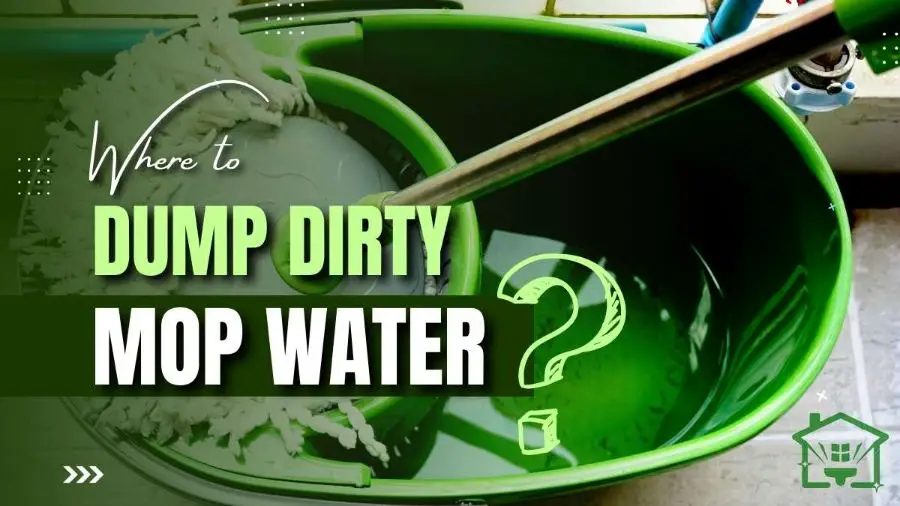Ideally, you should dump dirty mop water in a sanitary sewer system, which means your shower drain or the toilet.
But what about the debris and human hair floating in the mop water? They can clog any drain if dumped directly into them. Throwing mop water anywhere outside your house is not safe for the environment.
Dumping mop water into the kitchen sink drain or wash basins (where you may frequently drop your toothbrushes or other sanitary items) is not an option.
So, the question remains: where to dump the mop water? And why? Continue reading to find out!
👩🏫Where To Dump Dirty Mop Water: 3 Safest Methods
The table below presents the three best places to dump dirty mop water properly.
| Method | Why Safe? | How To Dump In Brief | Precautions (if any) |
| Dump down the shower drain. | The mop water gets drained directly into a sanitary sewer system, fit for such disposals. | Drain the mop water gently down the pipe. | Remove solid wastes from the water before dumping them. |
| Throw on wild bushes (in bare areas). | It stops wild weeds from growing further. | Stream the mop water to the bare bushes. | Eliminate the hair shafts from the water before dumping them on bushes. |
| Pour it into the open sewer system. | Open sanitary sewer drainage is built to drain dirty water without causing infections. | Pour mop water into an open sewer system near your house. | Follow local municipal regulations. |
The goal of all 3 methods is simple:
Pouring mop water so that it does not jam a drainage system and does not spread infections.
🚽Method #1: Dump Down the Shower Drain
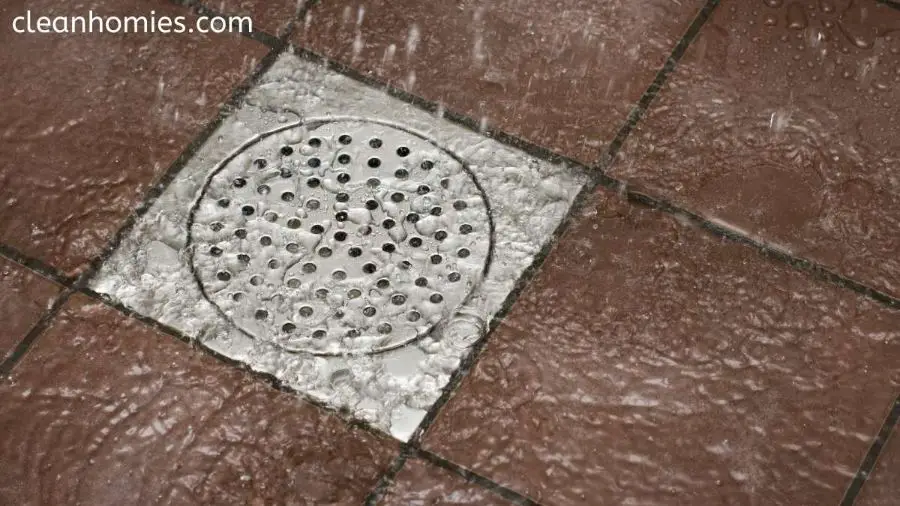
It’s one of the best ways to dispose of mop water. Unlike open waterways that drain normal water, your shower drain connects to a sanitary sewerage system for draining sanitary sewer and human waste without spreading infections.
Follow these steps to safely execute this method:
Also Read: 7 Reasons Why Hardwood Floors Get Sticky
🟢Method #2: Throw on Wild Bushes

If you own a bare lawn, including wild bushes, which is not visited by people or pets, you may dump mop water on it.
Such bare bushes aren’t useful to anyone, so dumping mop water is no problem. Moreover, the soil soaks the wastewater, leaving no scope for further contamination.
The steps to safely execute this method are:
Also Read: How To Clean Mouse Droppings From Carpet
💦Method #3: Pour It Into the Open Sewer System
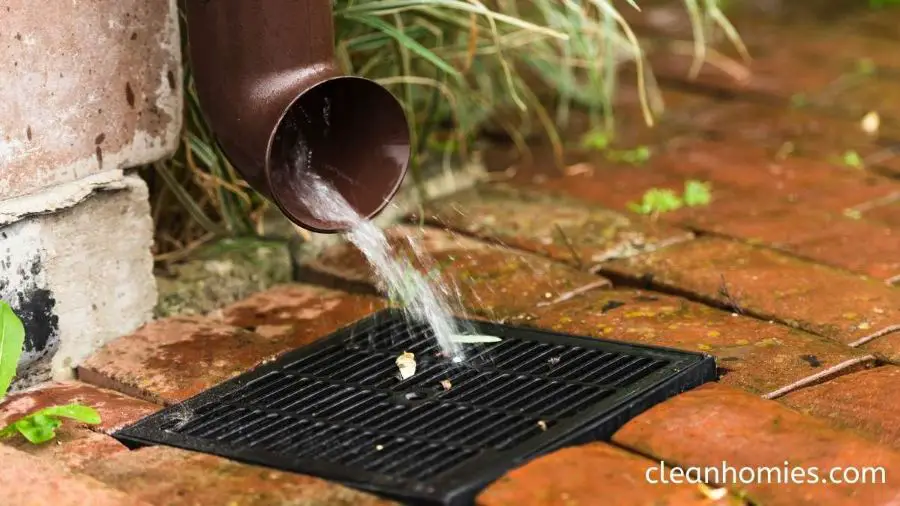
If the open sewer system of your area is fit for dumping mop water, you may also use that.
An open sewer system is different from a storm drain system. A storm drain system is strictly built to carry rainwater or stormwater. On the other hand, an open sewer system can drain sanitary sew and mop water properly.
The steps to safely execute this method are:
As a bonus measure, see that the drain gets disinfected periodically by the local authority.
Also Read: Why I'm Getting Black Feet From Floors?
🧹Why Is It Important To Dump Mop Water Immediately?
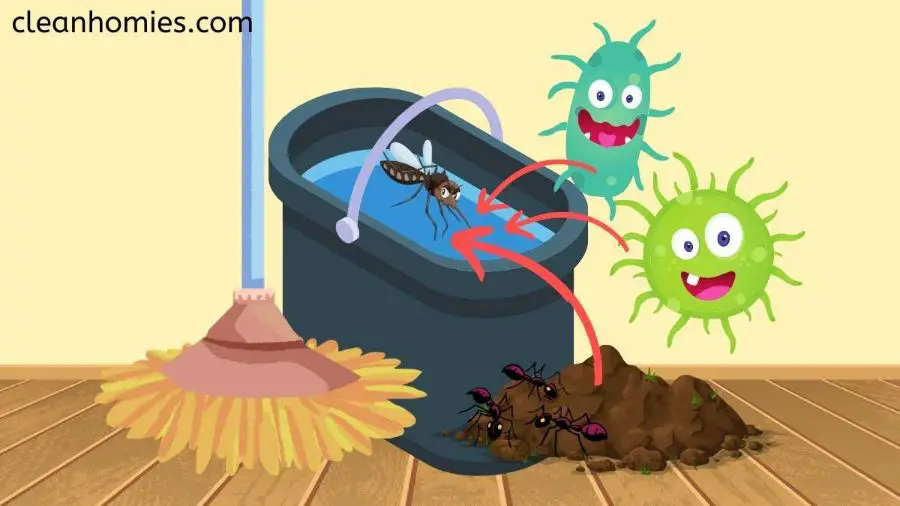
If you feel lazy dumping mop water immediately after the cleaning session, know this:
Used mop water is a toxic mix of hazardous chemicals (see next section for details) that can cause irreparable harm to your indoor environment.
You cannot reuse mop water either, as:
Hence, if there are multiple rooms in your house, do not clean the house with the same mopping water and the mopping cloth.
Replace your mop water as soon as it becomes visibly mucky. Also, wash your mopping cloth as soon as it feels muddy.
Also Read: How To Vacuum Ants Out Of Carpet
🧪What Are The Common Cleaning Chemicals Used In Mop Water?
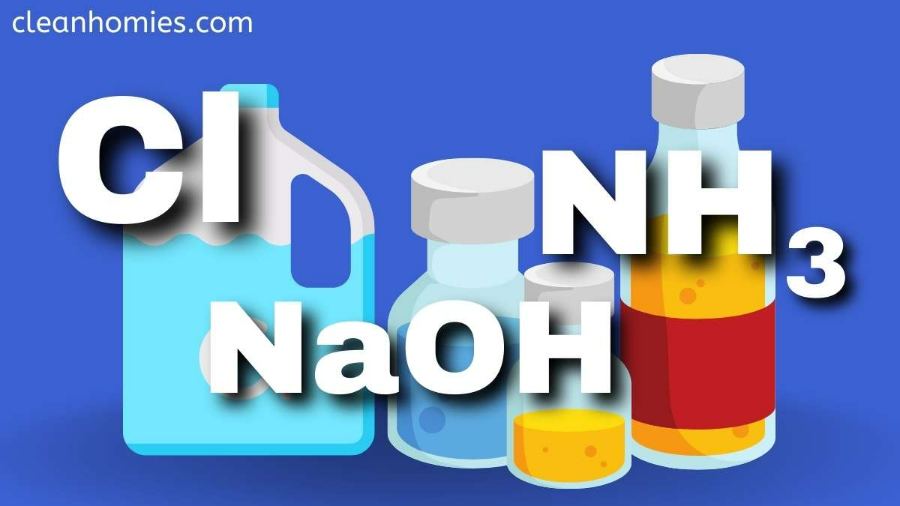
Mopping a dirty room with plain water might clean the dirt, but it won’t eliminate germs. Thus, we add different chemicals to our mopping water to kill the germs on the floor.
However, people are usually unaware of the exact ratio of adding these chemicals into the mopping water so that it does not affect their health.
Here’s a quick list of common chemicals used in mop water, their correct ratio, and their harmful health effects if not properly disposed of:
| Chemical | Correct Ratio | Health Effects |
| Chlorine | 1 tablespoon in 1 gallon of cold water | Respiratory and thyroid issues |
| Sodium Hydroxide | 3 tablespoons in 1 gallon of cold water | Chemical burns and irreversible injury |
| Ammonia | 2 cups of ammonia in 1 gallon of warm water | Coughing and burning sensation |
You should never mix chlorine with ammonia, acids, or other harsh chemicals like hydrogen peroxide, as it can lead to serious health problems.
The correct ratios mentioned above are important as if the wrong chemical-water ratio is used, it can cause problems even if mop water is properly dumped.
Reason:
It’s because your floor will be left with harmful chemicals on its surface, and pets, children, and even adults might come in contact with these chemicals while they walk or sit on the floor.
It’s better to use eco-friendly cleaning products, as far as possible, for cleaning your home, such as:
These organic and eco-friendly cleaners are 100% safe for your health. You may also search for readymade eco-friendly cleaning supplies on the internet.
Also Read: How To Clean Unfinished Wood Floors
🙅♂️Where To Dump Mop Water: Don’t Do This
The last thing to happen is to see a lady watering fresh plants with mop water. Yes, I saw that!
The chemicals that are so unsafe for humans can badly affect the plants, which otherwise cannot even shower themselves.
The chemicals can disturb the pH of the soil; they can clog the stomata of the leaves and eventually kill the plant. So never use the mop water to water your plants.
Besides, here are some other don’ts you should follow:
Also Read: What Is Bidet Toilet?
💡Where To Dispose of Mop Water FAQs
Where do you dump mop water in a restaurant
In restaurants, you can dump mop water in a drain designed for draining sewage or mop water properly. But first, ensure the drain descends to a sanitary sewerage system.
If the former is unavailable, look for a deserted grassland behind the restaurant. The soil would soak the mop water avoiding further spread.
How should employees in a commercial area dispose of mop water?
Commercial areas need significantly more mop water to clean, so employees need to construct a separate sanitary sewerage system for discarding mop water with the local government’s permission.
Besides, the cleaner should wear long rubber gloves to secure their hands from the dirt and dangerous chemicals of the mop water.
Should you dump mop water down the kitchen sink?
The purpose of the kitchen sink is to wash dishes, vegetables, and other food items. A contaminated kitchen sink or kitchen floor will lead to food poisoning.
It’s a dirty job to infect the kitchen sink with mop water full of many germs, bacteria, and sew.
How often should you change the dirty mop water?
There is no predefined rule or standard regulation to change dirty mop water. However, the cleaner should change the water whenever it’s visibly dirty.
The cleaner should change the mop water in a hospital or other health care centers after cleaning every patient’s room, especially if they suffer from an infection. Wearing gloves must be mandatory.
Should you reuse mop water?
You must never reuse mop water for any purpose.
It’s important to understand that mop water, once used, is already full of dirt, grime, debris, germs, bacteria, and dangerous chemicals.
You should dispose of mop water safely and immediately.

Adarsh is a Health Science graduate with expertise in environmental health and wellness. He is a Neat Freak who constantly looks for ways to keep his surroundings clean. At Clean Homies, Adarsh is focused on researching and sharing information on how you can maintain hygiene at home for a happy life.

